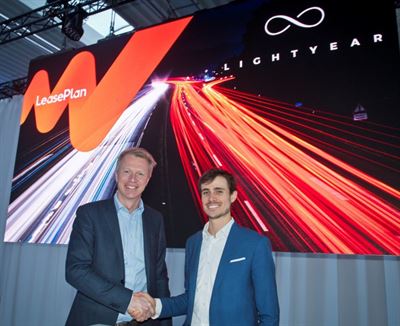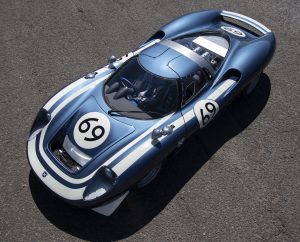Ajoy Lall: 'Sustainable business practices are in Tata Motors' DNA.'
Tag: JLR
LeasePlan and Lightyear to deliver first solar lease car
Fri, Jan 11, 2019 15:01 CET First Lightyear One on the road in 2020 Helmond, the Netherlands, 18 December 2018: LeasePlan Netherlands collaborates with Dutch scale-up Lightyear, the first company in the world to develop an electric solar car for consumers. LeasePlan Netherlands becomes Lightyear’s leasing partner for the Lightyear One, the first car produced… Continue reading LeasePlan and Lightyear to deliver first solar lease car
Peugeot workers target Brexit spoils
With the no-deal risk rising after Johnson decided to suspend parliament, France, Spain, Germany or Portugal are poised to mop up work if an accord with the European Union can’t be reached. Autoworkers in continental Europe are angling to snatch Vauxhall production that owner PSA Group plans to move out of the U.K. if Prime… Continue reading Peugeot workers target Brexit spoils
Tata Motors defers planned fundraise of up to $1.5b
Tata Motors Ltd has indefinitely deferred a planned fundraise of up to $1.5 billion in foreign currency loans after failing to garner sufficient interest from potential lenders, two people directly aware of the development said, requesting anonymity. The funds were to be raised by a Singapore-based entity of Tata Motors to refinance existing loans of Tata Motors… Continue reading Tata Motors defers planned fundraise of up to $1.5b
India: Hero MotoCorp’s Pawan Munjal in talks to invest in Ola Electric
Pawan Munjal might be the next big investor after Ratan Tata to invest in Ola Electric. Billionaire Pawan Munjal, chairman of Hero MotoCorp Ltd—India’s largest two-wheeler maker by sales—is in advanced talks to invest in the electric mobility arm of ride-hailing company Ola, said four people directly aware of the development. An investment in Ola… Continue reading India: Hero MotoCorp’s Pawan Munjal in talks to invest in Ola Electric
Survey: Range, cost, infrastructure sum up why shoppers avoid EVs
We’ve heard it repeatedly as the result of various polls and surveys: Active and prospective car shoppers are interested in fully electric vehicles and eager to go electric.
The AAA, for instance, has in annual surveys for the past three years found that 15 to 20 percent of Americans “will likely go electric in their next vehicle purchase.”
With battery electric vehicle sales remaining around five percent of the U.S. vehicle market, why are some Americans not yet making the leap? The lack of variety in fully electric vehicle types is certainly part of it, but as a new survey points out, the reason shoppers are avoiding EVs still boils down to some familiar reasons.
Car shoppers' EV avoidance reasons – Autolist
In the poll of 1,567 “current car shoppers,” conducted earlier this month and released Tuesday, Autolist found the primary reasons for avoiding electric vehicles—in order—to be driving range, the price relative to similar gas vehicles, and the lack of charging infrastructure in their home area. Meanwhile, the most important attributes, in order, were seen as price, range and available charging.
Consumers continue to want high driving-range numbers—and perhaps to the detriment of luxury-priced models like the Jaguar I-Pace and Audi E-tron, they have much higher expectations for rated range from luxury vehicles.
When Autolist asked consumers for the minimum range they’d accept in a $35,000 electric vehicle, the leading answer was “between 250 and 300 miles”—stipulations perhaps most closely met by the Hyundai Kona Electric, with its $37,995 base price and 258-mile EPA-rated range. The Chevrolet Bolt EV and Kia Niro EV are also close to meeting those expectations.
2019 Hyundai Kona Electric
But when Autolist asked the same about a $70,000 EV, the responses, the most common response was “more than 500 miles.”
At an EPA-rated 370 miles, the Tesla Model S Long Range currently holds the top rated range of any regular-production electric vehicle. No EV currently achieves close to 500 miles, or even 400 miles.
2019 Tesla Model S
There’s a riptide beneath these impressions, and that’s age. The survey found a direct and pronounced correlation between age and the importance of EV range. For instance, 32 percent of those 18-23 years old listed range among the top three avoidance issues, while for those over 76 years old it was in the top three for 60 percent. Autolist reports that there was a similar trendline created between age and the importance of the charging network, although that one had an inflection point around age 45.
Also, with rising shopper age, sticker price was less important, but resale value was more important.
A Volvo/Harris poll from earlier this year surveyed both EV drivers and non-EV drivers and found strong belief among both groups that EVs are the future. However 61 percent of respondents indicated that a lack of charging structure held back a purchase. While 38 percent of EV drivers were concerned about running out of power, 58 percent of all drivers combined indicated this concern.
One other figure stood out as especially surprising (and promising for the future of the technology): 55 percent of respondents said that the EV would be their primary—not secondary—vehicle if they bought one today. The survey also found that 69 percent supported tax rebates and other incentives aimed toward the wider adoption of EVs. That echoes the bipartisan support of the tax credit earlier this year, after it had been potentially on the chopping block.
Ford Announces Leadership Changes; Steven Armstrong to Succeed Nigel Harris as President, Changan Ford China JV
DEARBORN, Michigan, Aug. 22, 2019 – Ford Motor Company today announced that Steven Armstrong, who is currently chairman, Ford of Europe, has been named president of the Changan Ford joint venture in China. Armstrong succeeds Nigel Harris, who has elected to retire from Ford at the end of 2019, after 34 years of distinguished service… Continue reading Ford Announces Leadership Changes; Steven Armstrong to Succeed Nigel Harris as President, Changan Ford China JV
Zomato partners with tech startup FarEye
FarEye said with its machine learning platform, it will help Zomato gain end-to-end visibility of logistics activities and boost KPI management of third-party logistics providers. CHENNAI: Zomato has partnered with FarEye, a digital logistics company, to help restaurants stay compliant with Food Safety and Standards Authority of India’s (FSSAI) guidelines. FarEye, which facilitates over 10… Continue reading Zomato partners with tech startup FarEye
Jaguar Land Rover is working on 3D tech that will alert drivers to road hazards
The interior of a 2020 Jaguar XE sports sedan is seen during a Jaguar Land Rover Automotive PLC event in New York, U.S., on Tuesday, April 16, 2019.David Dlegado | Bloomberg | Getty ImagesEngineers at Jaguar Land Rover are developing 3D, “head up” technology that could project real-time safety alerts to drivers.
The car manufacturer is working with researchers from the University of Cambridge on the technology, it said in an announcement Tuesday.
The research is aiming to create an immersive display that would “closely match” real world experiences, which would in turn enable drivers to react to prompts and hazards in a more natural way.
If implemented, the display could provide drivers with information on lane departures, satellite navigation directions and road hazards.
“This program is at the forefront of development in the virtual reality space,” the University of Cambridge's Daping Chu said in a statement.
“We're looking at concepts and components which will set the scene for the connected, shared and autonomous cars of the future,” Chu, who is director of both the Centre for Photonic Devices and Sensors and the Centre for Advanced Photonics and Electronics, added.
As technology develops and vehicles become increasingly connected, manufacturers are working on a number of innovative systems to improve safety.
In March, for example, Volvo Cars announced it would be installing in-car cameras and sensors to check drivers for signs of intoxication and distraction.
The firm said the technology would be used to monitor drivers and, when needed, enable the car “to intervene if a clearly intoxicated or distracted driver does not respond to warning signals and is risking an accident involving serious injury or death.”
Actions the car could take include limiting speed to slowing down and then parking the car in a safe place. Installation of the technology will start in the early 2020s.
Ecurie Ecosse LM69 – Creating a Modern Racing Thoroughbred
What if…? It’s a question that has dominated the history of the XJ13, a prototype built by Jaguar in 1966 in a quest to continue the marque’s legendary run of success in the Le Mans 24 Hours. Powered by a new quad-cam, 5-litre V12, the XJ13 was Jaguar’s first mid-engined car – and without doubt… Continue reading Ecurie Ecosse LM69 – Creating a Modern Racing Thoroughbred

